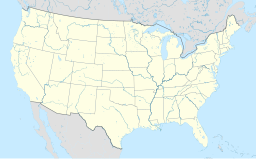Chester Springs
| Chester Springs | |
| Unincorporated community | |
|
Chester Springs post office on Route 113
|
|
| Country | United States |
|---|---|
| State | Pennsylvania |
| County | Chester |
| Township | West Pikeland |
| Elevation | 256 ft (78.0 m) |
| Coordinates | 40°05′42″N 75°37′01″W / 40.09500°N 75.61694°WCoordinates: 40°05′42″N 75°37′01″W / 40.09500°N 75.61694°W |
| Population | 7,520 (2000) |
| Timezone | EST (UTC-5) |
| - summer (DST) | EDT (UTC-4) |
| Area code | 610 |
| Designated | May 13, 1948 |
Chester Springs is an unincorporated community in Chester County, Pennsylvania, United States. It is centered on West Pikeland Township, and extends into Charlestown Township, Upper Uwchlan Township, Wallace Township, East Nantmeal Township, and West Vincent Township. Chester Springs is one of the most historically significant areas in Chester County. It is also considered one of the most prosperous and affluent areas in the county.
The Chester Springs postal zone is considerably larger than Chester Springs village. As of the 2000 census, the population of Chester Springs Zip Code Tabulation Area (19425) was 7,520. Chester Springs principally lies within the Downingtown Area School District. Some areas of Chester Springs are in the Great Valley School District, Phoenixville Area School District, and Owen J. Roberts School District. The Chester Springs post office is located on Pennsylvania Route 113 near the heart of the village.
The Historic Yellow Springs Village is located in Chester Springs. The community includes historic churches, established in the 1770s by German Reformed and Lutheran members. These include two facilities on Clover Mill Road: St. Peter's United Church of Christ, whose current building was constructed in 1835, had its first worship place built by its early German Reformed congregation in 1772. St. Peter's Evangelical Lutheran Church was planted by Heinrich Melchior Muhlenberg. Chester Springs is also home to The Mill at Anselma (Lightfoot Mill), a National Historic Landmark grain mill built in 1747. The Mill at Anselma is considered the best-preserved example of a grain mill of its kind in the country, boasting its original wooden gearing system and millstones. It is fully functional today and continues to mill flour and cornmeal for sale. The historic Larkin Covered Bridge, built in 1881, is located near the village of Eagle.
...
Wikipedia



